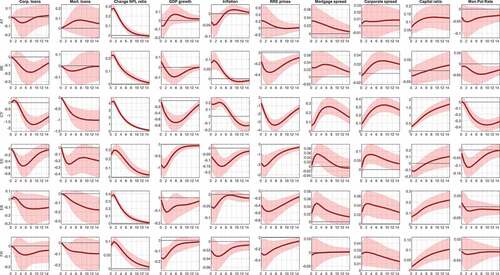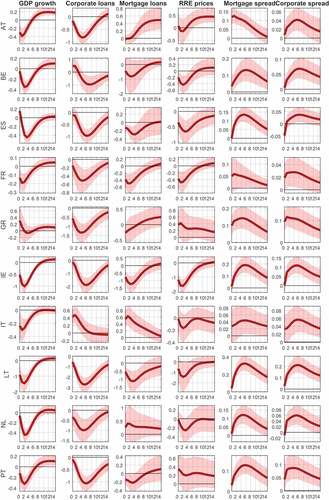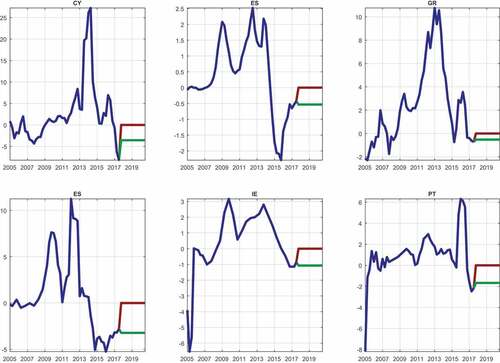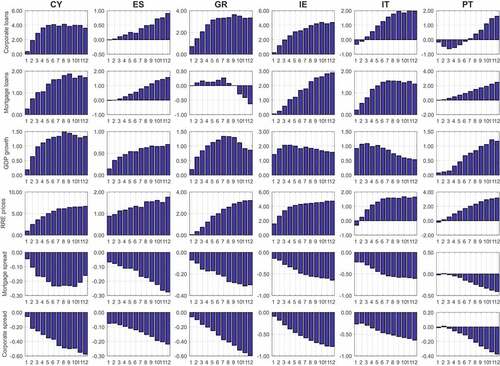Figures & data
Table 1. Data sources.
Table 2. Summary statistics.
Figure 1. Non-performing loan ratios.

Table 3. Correlation matrix among the variables included in the panel VAR.
Figure 2a. Response to a shock to the change in the NPL ratio with new ordering.

Table 4. Forecast error variance decomposition (shock to the change in the NPL ratio).
Figure 3. Response to a shock to the annual rate of change in NPL volumes.

Figure 4. Observed and assumed out-of-sample baseline and adverse change in NPL ratios for the structural scenario analysis.

Figure 5. Difference in the structural scenario forecasts between the baseline and the adverse path for the main variables included in the panel VAR.


